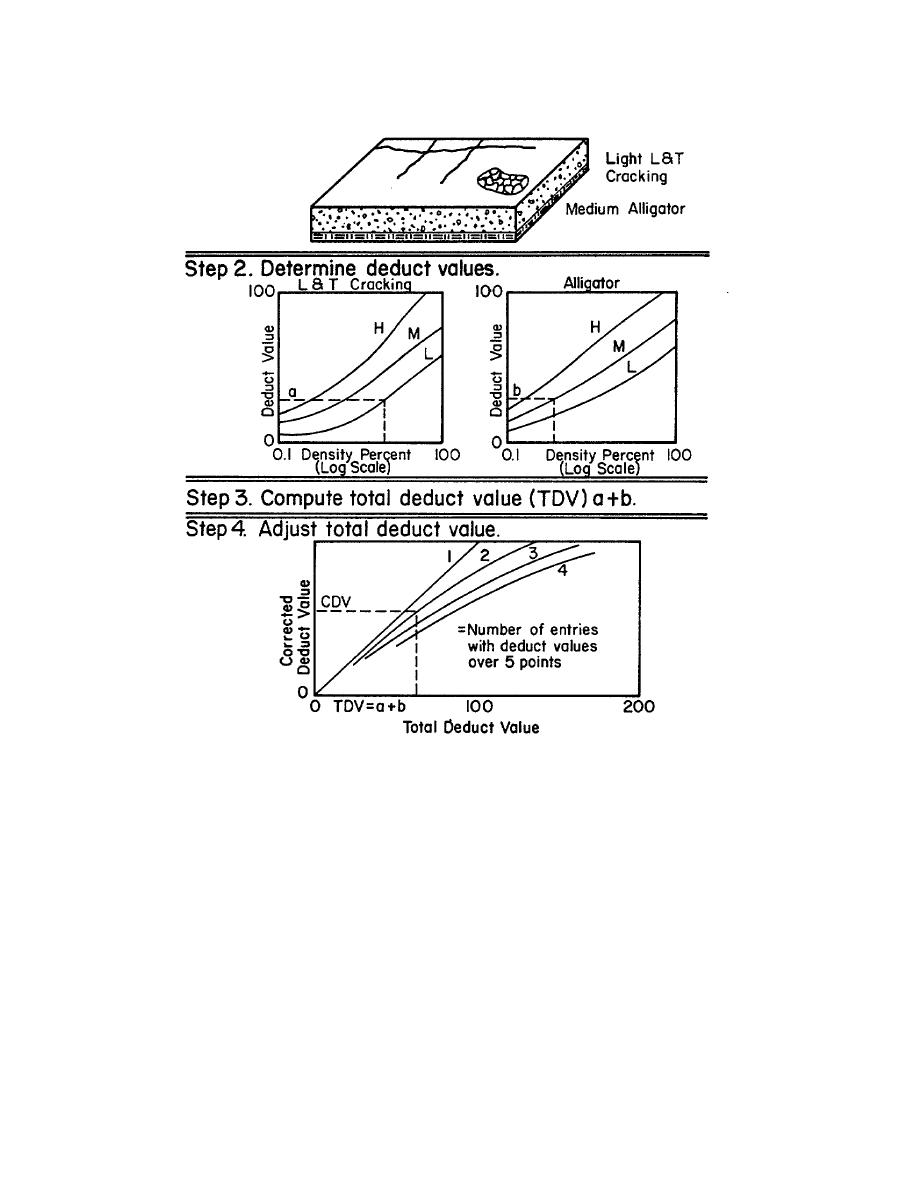
TM 5-623
Step 1. Inspect sample units: Determine distress types
and severity levels and measure density.
Step 5. Compute pavement condition index (PCI) =100 -CDV for each
sample unit inspected
Figure 3-6. Steps for calculating PCI for a sample unit.
(1) Step 1. Each sample unit is inspected and
individual deduct value. For example, assume that two
distresses were found in an asphalt pavement, one with
distress data recorded on DA Form 5145-R for concrete
a deduct value of 50, and the other with a deduct value
or DA Form 5146-R for bituminous pavements as
of 10. Using figure C-20, the CDV for q=2 (q = number
described in paragraph 3-3. (See figs 3-2 and 3-3.)
(2) Step 2. The deduct values are determined
of individual deducts whose value is greater than 5) is
44. Since 44 is lower than 50, the CDV is set equal to
from the deduct value curves for each distress type and
50.
severity. (See app C.)
(5) Step 5. The PCI is computed using the
(3) Step 3. A total deduct value (TDV) is
relation PCI = 100 CDV.
computed by summing all individual deduct values.
(4) Step 4. Once the TDV is computed, the
c. Calculating the PCI for a pavement section. If all
corrected deduct value (CDV) can be determined from
sample units in a section are surveyed, the PCI of the
the correction curves (fig C-20 or fig C-40). When
section is computed by averaging the PCIs
determining the CDV, if any individual deduct value is
higher than the CDV, the CDV is set equal to the highest
3-7



 Previous Page
Previous Page
